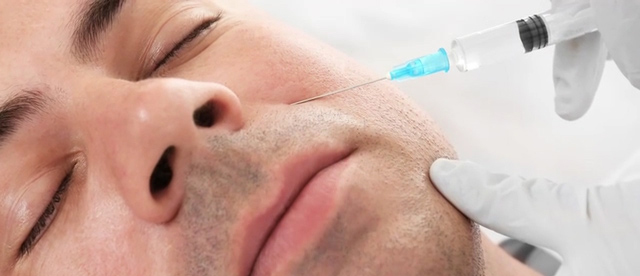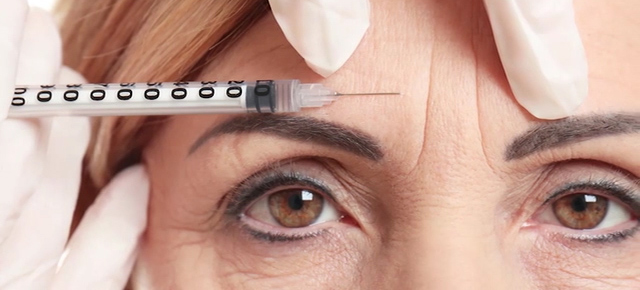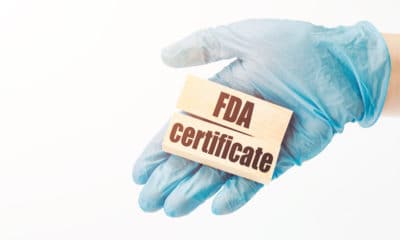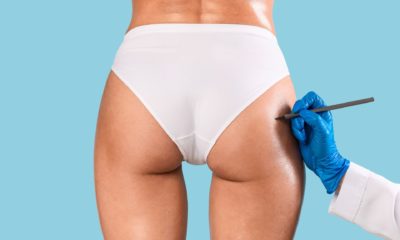Facial fillers are one of the most popular non-surgical procedures in plastic surgery, there’s no doubt about it. Adding volume to the face creates a nearly instant rejuvenation, replacing what has been lost due to time and gravity. Dr. William P. Adams, Jr., a board certified plastic surgeon in Dallas, Texas, hosts the latest episode of No Spin Live, hearing from colleagues across the country about fillers and why their popularity and success is very real.
Facial Fillers and Volume
Fillers come in a variety of names, but they all seek to achieve the same general goal: fill the face where volume has been lost. Everyone can tell when looking at someone if they’re older. When playing the guess-my-age game, the number one variable anyone uses – whether they realize it or not – is how much volume has been lost. Someone in their mid to late 30’s and beyond start to lose volume, causing nearly every facial change associated with aging.
The public at large tends to think facelifts are the end all be all of facial rejuvenation, not realizing that without volume, a face will continue to look aged. To combat this, injectable fillers were introduced to inject volume back into the face without the need for a surgical procedure, providing true rejuvenation.
Board certified plastic surgeon Dr. Steven Camp of Fort Worth uses fillers in his practice to help lift certain areas of the face to provide a quick and successful rejuvenation. “Fillers are great to really shape and mold the face in a positive way,” Camp explains. “I’ve found that treating the temples and areas around the midface and cheeks are really forgiving and beneficial to patients. They’re quick and easy to tolerate.”
How Safe are Fillers?
Facial fillers themselves are quite safe. Problems arise when they are injected poorly, which is why any expert would always suggest a board certified plastic surgeon or dermatologist to perform the injections. Even still, some areas of the face pose more problems than others.
The area around the eyes – such as the bags and general loss of volume – is thin and sensitive, requiring finesse of the highest order. There are still potential problems, which are being sorted by newer, more precise injection tools.
Board certified plastic surgeon Dr. Richard Zienowicz of Rhode Island mentions his move from a needle to a micro cannula, or a blunt-tipped needle that is less likely to penetrate tissue that shouldn’t be penetrated. “One of the biggest boons to injection is a micro cannula; it takes a lot of the worry out of injecting,” says Zienowicz. “You’re presenting a blunt tip to the tissue, which is very unlikely to penetrate a vessel and cause some embolic phenomenom. I’ve found it’s much easier to layer the material down so you get a more predictable outcome.”
Is it Facial Fillers You Need? Or Something Else?
The prevalence, success, and, frankly, the high-profit margins for practitioners have led many patients to seek out treatment, yet not all are good candidates. This situation comes back to the need to seek out a true expert, someone who will be honest and tell you that fillers actually are not what you need. Problems arise when physicians with less than adequate experience and even integrity tell patients fillers will work, even if they need something else.
For example, skin laxity is also a major component of facial aging, and one that cannot be significantly helped with fillers. For patients who have significant loss of volume and skin laxity, an approach of just fillers is not very wise.
These are the kinds of questions board certified plastic surgeon Dr. Richard Restifo of Connecticut seeks out when evaluating patients. “The aging face… Are we dealing with volume deficiency or skin laxity? I would say that fillers, sure, they can be used, but they should be used in limited quantities.”
When it comes down to it, not everyone is a good candidate for fillers, and it’s up to patients to find a doctor with the integrity and experience to inform them that is the case.
Fillers are Temporary; Is there Another Option?
One of the main downsides to facial fillers is their transitory nature. Typically they last anywhere from 6 months to at most 2 years, depending on a variety of variables. Patients love and enjoy the results when the injections are done correctly, but in the end may rather something more permanent, and even “natural”.
Fat grafting all over the body is an exponentially growing procedure, one board certified plastic surgeon Dr. Dan Del Vecchio of Boston is intimiately familiar with when it comes to buttock augmentation. Fat grafting, he says, could also be used wisely in the face. The procedure takes longer – requiring liposuction to opbatin the fat first – but the results are permanent.
“I think fillers are great,” explains Del Vecchio. “I think you’ve got to think about off-the-shelf, lunchtime, come in come out vs. fat grafting and this whole science of nano-fat grafting that’s taken over. Small, little particles of fat probably rejuvenate better. The problem is, it’s a longer procedure – 2 hours in the office.”
Bottom Line: Fillers are the Real Deal
Facial fillers and their very close relative Botox catch all sorts of headlines, and for good reason. They are quick, effective, and bridge the gap between middle age and older when it comes to rejuvenation. No surgery, just some injections and you’re all set.
If you’re wondering how Hollywood’s men and women in their mid-30’s to 50’s look so great for being middle-aged, look no further than the incredible rejuvenation fillers can accomplish.


















Facebook
Twitter
Instagram
YouTube
RSS